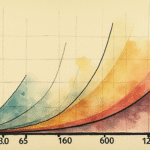Introduction to Income Improvements in Mexico
In recent years, Mexico has witnessed substantial improvements in household incomes. The average income of the poorest decile (D1), which comprises the most impoverished families, has seen significant growth over the past eight years. However, despite these advancements, there remains a considerable reliance on direct transfers for income.
Direct Transfers as a Major Income Source
Data from the Enigh (National Survey of Income and Expenditure in Households) reveals that, as of 2024, nearly 36.2% of the average income for the poorest families comes from direct transfers, such as pensions, scholarships, government support, or remittances.
Comparison Across Income Deciles
The dependency on direct transfers varies across income deciles:
- Decile I (Poorest): 36.2% of income comes from transfers.
- Decile V: 18.5% of income comes from transfers.
- Decile X (Wealthiest): Only 15.6% of income comes from transfers.
These statistics indicate that a significant portion of the money available to the most impoverished households does not directly result from their labor, potentially leading to increased social and economic vulnerability.
Who are the Key Players?
Direct transfers play a crucial role in the lives of Mexico’s poorest families. These transfers include:
- Pensions: Retirement benefits for the elderly.
- Scholarships: Financial aid for students to pursue education.
- Government Support: Programs like Oportunidades (now Prospera) that provide cash transfers to low-income families.
- Remittances: Money sent by migrants working abroad to their families in Mexico.
Impact on Society and Economy
The high reliance on direct transfers among the poorest deciles can have several implications:
- Economic Vulnerability: Families may remain economically precarious, as their income is not primarily derived from sustainable employment.
- Social Safety Nets: The importance of these transfers underscores the necessity of robust social safety net programs to support vulnerable populations.
- Policy Implications: Policymakers must consider strategies to enhance employment opportunities and reduce dependency on transfers, ensuring long-term economic stability for the poorest segments of society.
Key Questions and Answers
- What are direct transfers in Mexico? Direct transfers include pensions, scholarships, government support programs (like Oportunidades/Prospera), and remittances from abroad.
- Why are direct transfers significant for the poorest families? For many of these families, direct transfers constitute a substantial portion of their income, often exceeding 30%.
- What are the implications of high dependency on direct transfers? It can lead to increased economic vulnerability, highlight the importance of social safety nets, and suggest a need for policies that promote employment opportunities.






